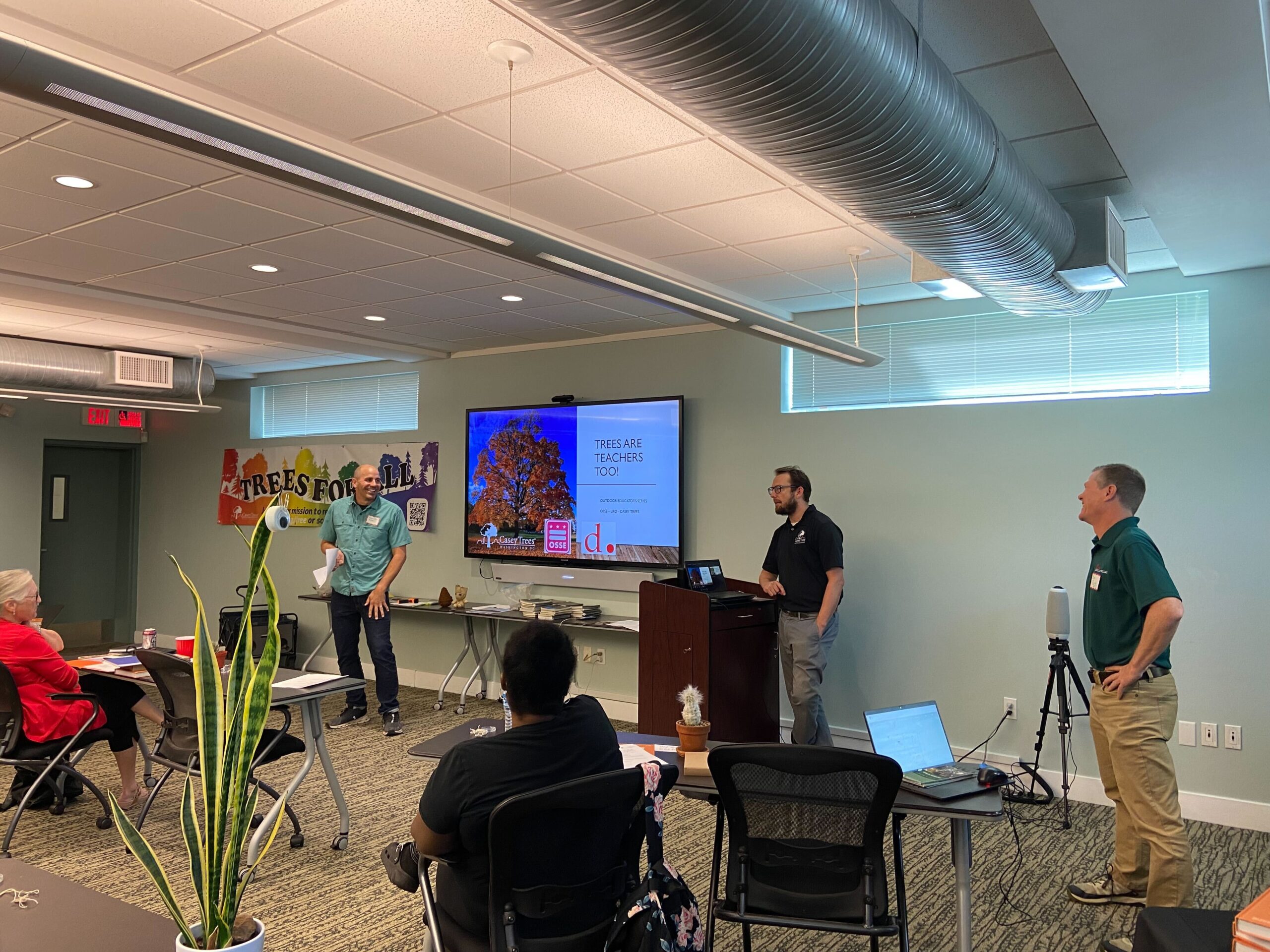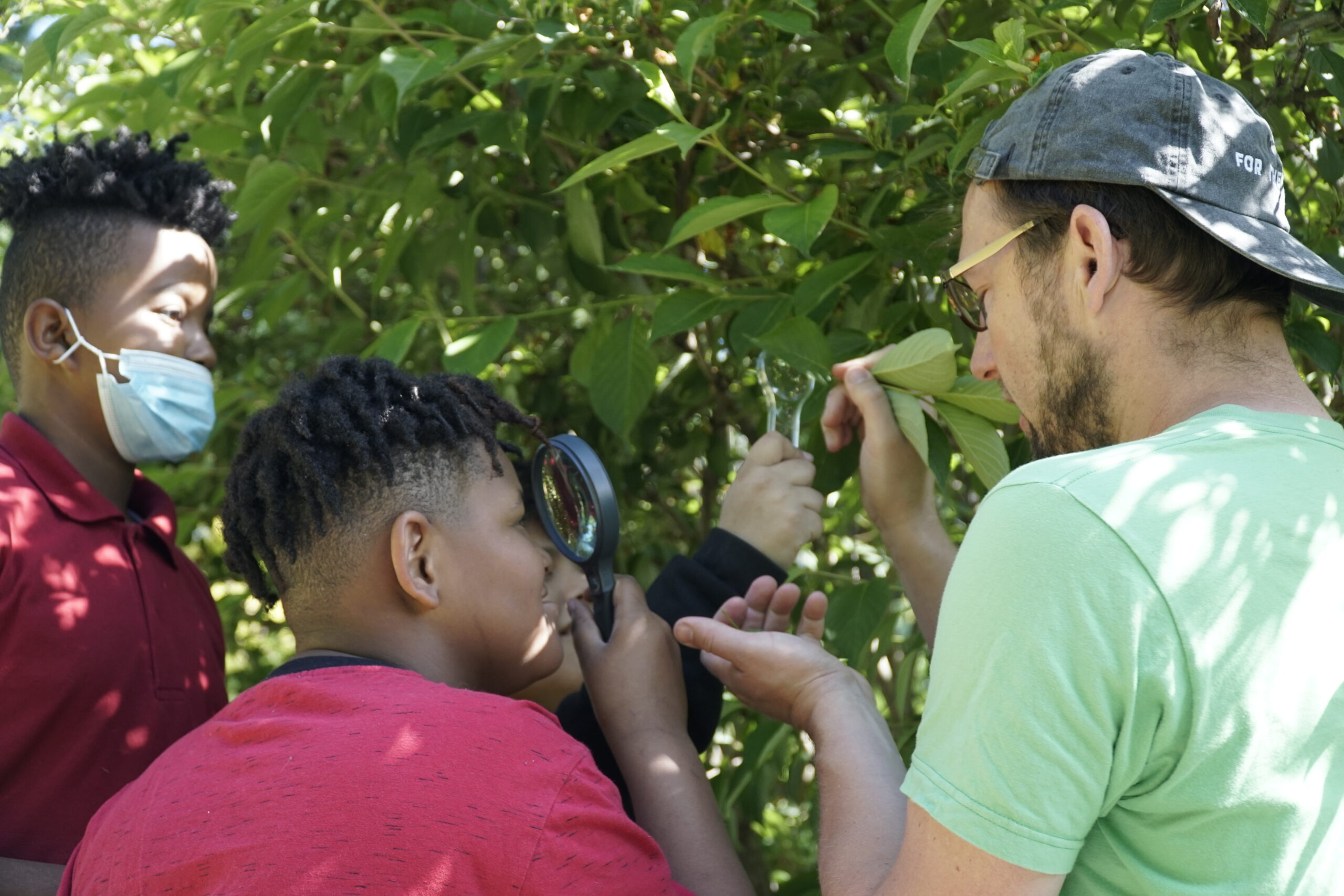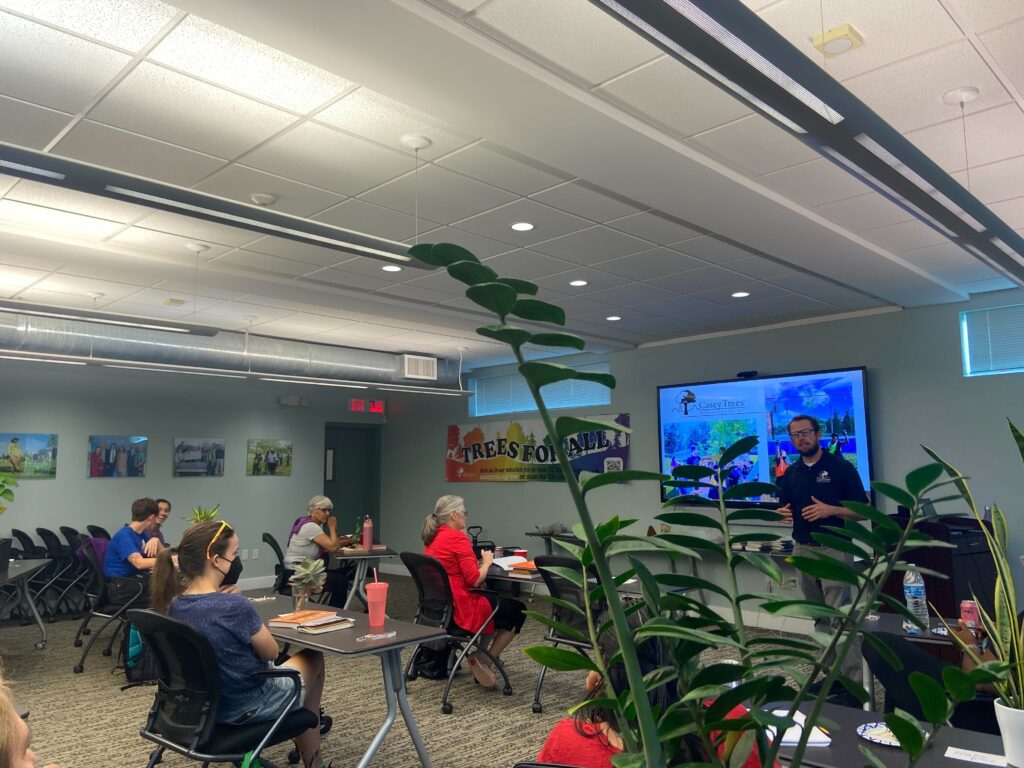THE LEAFLET

School’s in Session!

As the new school year kicks off, our youth team is already hard at work with teachers, partners, and students to boost environmental literacy and connect them with trees. Each year, Garden School Specialist Sam Ullery from the Office of the State Superintendent of Education (OSSE) hosts monthly workshops for outdoor educators in DC, helping them weave outdoor learning and core curriculum.
 To start this school year, we teamed up with OSSE and DC’s Urban Forestry Division (UFD) to lead the first fall Outdoor Learning gathering for teachers and environmental educators. The theme? “Trees are Teachers, too.” Trees are living organisms that change dramatically across seasons and years, but they’re often described in dry, static terms in biology textbooks; with our workshop, we brought them to life. Educators participated in hands-on activities like writing from a plant’s perspective, learning about tree circulatory systems with leaf rubbings, and enjoyed a guided tree walk in Brookland, where they explored different trees, seeds, and stories. UFD arborist Sam Doan also shared insights on the city’s urban wood reuse program and how schools can tap into it.
To start this school year, we teamed up with OSSE and DC’s Urban Forestry Division (UFD) to lead the first fall Outdoor Learning gathering for teachers and environmental educators. The theme? “Trees are Teachers, too.” Trees are living organisms that change dramatically across seasons and years, but they’re often described in dry, static terms in biology textbooks; with our workshop, we brought them to life. Educators participated in hands-on activities like writing from a plant’s perspective, learning about tree circulatory systems with leaf rubbings, and enjoyed a guided tree walk in Brookland, where they explored different trees, seeds, and stories. UFD arborist Sam Doan also shared insights on the city’s urban wood reuse program and how schools can tap into it.
This fall, thanks to funding from the Department of Energy and the Environment, our team and partners are delivering Meaningful Watershed Educational Experiences (MWEEs) to more than 2,000 4th and 5th graders in DC public and public charter schools. Casey Trees is working alongside Anacostia Watershed Society, Living Classrooms, Nature Forward, and Urban Adventure Squad to provide a full-year “Nature Near Schools” program to the 4th graders, while NatureBridge and Alice Ferguson Foundation will be leading overnight trips to their campuses for the 5th graders.
 Each 4th grader will participate in schoolyard investigations to learn about watersheds and pollution solutions. After exploring their local environment, students will go on a full-day field trip to a naturalized DC setting to discover the human impacts on that ecosystem. The program wraps up with a student action project. One of the amazing things about the MWEE framework is that it emphasizes the importance of youth voices. Students will work together to identify an environmental issue, devise solutions to a problem, and include local stakeholders, like their council members, to see the change they want to create at their school.
Each 4th grader will participate in schoolyard investigations to learn about watersheds and pollution solutions. After exploring their local environment, students will go on a full-day field trip to a naturalized DC setting to discover the human impacts on that ecosystem. The program wraps up with a student action project. One of the amazing things about the MWEE framework is that it emphasizes the importance of youth voices. Students will work together to identify an environmental issue, devise solutions to a problem, and include local stakeholders, like their council members, to see the change they want to create at their school.
 Last year, Casey Trees spear-headed the Nature Near Schools program to work with 1,067 4th graders in a MWEE program. Casey Trees and Urban Adventure Squad led the near-school experiences and worked with 24 schools in total. Every student took part in a field trip to Kingman Island, guided by Living Classrooms, and enjoyed a boat tour of the Anacostia River with the Anacostia Watershed Society. Students wrapped up the year with some impressive action projects. Here are some highlights:
Last year, Casey Trees spear-headed the Nature Near Schools program to work with 1,067 4th graders in a MWEE program. Casey Trees and Urban Adventure Squad led the near-school experiences and worked with 24 schools in total. Every student took part in a field trip to Kingman Island, guided by Living Classrooms, and enjoyed a boat tour of the Anacostia River with the Anacostia Watershed Society. Students wrapped up the year with some impressive action projects. Here are some highlights:
- Students at Capital City Public Charter School created a PSA video on the importance of planting pollinator plants.
- Nalle Elementary School students planted native trees at their school.
- Van Ness Elementary School students organized a community litter cleanup.
- Students at Plummer Elementary School planted pollinator bushes near trees in their schoolyard.
- H.D. Cooke Elementary School students created signs to hang up next to light switches to remind people to turn the lights off as they leave the room.
Every year, Casey Trees plants hundreds of trees at schools across the capitol region to improve shade for students in play areas and increase canopy at schools. In DC, the school tree canopy averages 13%, far lower than the overall city’s canopy coverage of 37%. Given climate change projections, it’s important to plant trees that will help shade and cool future generations of students. Just as important, we want students to feel they can make a positive environmental impact, which is why they help us plant and care for the trees.
This fall, Casey Trees will plant more than 200 trees at 10 schools in DC, Fairfax, and Prince George’s County. Most are Title I schools and in need of increased shade. Several plantings will be supported by a federal grant from the U.S. Forest Service to plant in underserved communities. Beyond shade, trees will provide important habitats to local wildlife and support outdoor learning spaces of great value to our educators.
At Casey Trees, we’re committed to not just planting trees but empowering students to take care of them, ensuring that they can make a lasting environmental impact.


